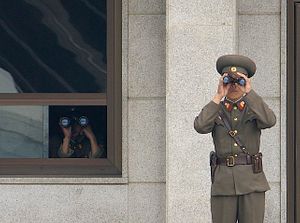Once again, North Korea has plunged all major powers in East Asia into a deep dilemma. Following the country’s most recent provocation—a satellite launch using ballistic missile technology—the United States chose to demonstrate its force and will, with F-22 Raptors flying low over South Korea. Moreover, South Korea, after a long period of hesitation, is now working closely with the United States in discussing the viability of a Terminal High-Altitude Area Defense (THAAD) system, which concerns China.
From China’s perspective, as encapsulated in comments by Chinaese Foreign Minister Wang Yi, three principles must be followed in dealing with a defiant North Korea. First, no nuclear weapons; second, stability; and third, China’s national interests must be respected. More specifically, China has agreed to support tougher sanctions against North Korea under the United Nations framework though it maintains that sanctions themselves should not and cannot be the goal of international diplomacy. The ultimate goal is to bring North Korea back to the negotiating table, whether this is through the Six-Party Talks or another forum.
There are some problems with the current approach, however. First, all previous sanctions have not succeeded in preventing North Korea from getting closer to becoming a full nuclear power. How can we be sure that this time sanctions will work when they haven’t in the past? If the sanctions are too light, then North Korea won’t feel any pain. If sanctions are too harsh, then North Korea might simply collapse or act more aggressively against South Korea. Unfortunately for all regional powers in East Asia, a collapsing North Korea is perhaps a worse outcome than a stable but authoritarian North Korea.
Also, South Korea must understand that it would be the biggest victim of a collapsed North Korea. Both a possible revenge military attack or a humanitarian refugee crisis could paralyze the South Korean economy—not to mention result in a full-scale war between the two. In this sense, deploying THAAD is not the best solution to the North Korean nuclear issue.
There is also a problem with the current U.S. approach of showing force to North Korea. All these military moves will only increase North Korea’s sense of insecurity. After all, we should not forget that all states in the international environment pursue survival first and North Korea is certainly now in ‘survival’ mode. Unfortunately, the United States seems to ignore this fundamental reality. North Korea will only come back to the negotiation table if its survival is guaranteed by the United States. Pyongyang currently sees the United States as the biggest threat to its survival—not South Korea, Japan, or China.
In light of all this, the ultimate solution to the North Korea nuclear problem will require two things. First, a security guarantee from the United States. Second, a deal where North Korea can abandon its nuclear program in exchange for economic aid from all concerned regional powers. This also would mean that the North Korean regime—no matter how cruel it might be—will continue to exist for a long while. This might not be a pretty picture for liberal interventionists, but it is the only viable one. All other options would bring disaster to the concerned powers, including the United States.
































